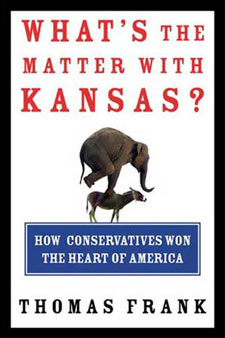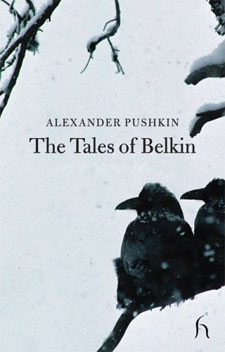Homer
The Odyssey
(trans. Samuel Butler)
While on a visit home, looking for something to read, I picked up the Great Books edition of Homer, volume IV in that series. This edition of the Great Books of the Western World, edited by Robert Maynard Hutchins and published by the Encyclopæedia Britannica in 1952, was my family’s one real pretension to intellectualism. I am not entirely sure how it got into the house; it was never really read, as, my mother explained, the type was too small to read. It was also vexingly incomplete, as some religion-crazed relative had made off with Volume II of Thomas Aquinas; this bothered me as a youth. I don’t think anyone actually read any of these; I’d periodically pick up one volume or another (“Darwin” or “Swift/Sterne”) with intent, but I don’t remember how far I would get. Looking at the list of authors now, it seems decidedly weird: Plotinus gets a whole volume? Is it really worth reading Lavoisier or Fourier or Faraday now? The English-language novelists are the aforementioned Swift & Sterne, followed by Fielding, then a big jump to land on Melville. The ending sequence, volumes 49 through 54, seems particularly ominous: Darwin, Marx & Engels, Tolstoy, Dostoevsky, William James, Freud. Presumably there’s a good history of the Great Books project, though I haven’t seen anything other than Wikipedia’s entry, which points out that ours was the first edition of the em>Great Books of the Western World, and that Sterne and Fielding were dropped in the second.
But picking up Homer, it turned out that the translations are by Samuel Butler, which translation I am interested in because it’s the one Joyce used. It’s a decidedly idiosyncratic translation: most prominently, names are given their Roman rather than Greek version, so Odysseus is Ulysses. It’s also prose. It’s an odd choice for a version to include as one of the Great Books: while it’s eminently readable, Butler’s ideas about Homer and how he should be translated were very much his own, and his introduction and footnotes explain his view that the Odyssey was written by a woman (probably Nausicaa) and point out details in the text that support this view; Butler had first advanced this view in The Authoress of the Odyssey (1897), and came at his translation with an argument, albeit one argued in a way that leaves much to be desired. (This note on III.266 might be taken as typical: “The writer – ever jealous for the honour of women – extenuates Clytemnestra’s guilt as far as possible, and explains it as due to her having been left unprotected, and fallen into the hands of a wicked man.” What’s weirdly interesting about the Great Books edition, however, is that the editors have swept away Butler’s introduction and notes. (An online edition of his translation of the Odyssey is available at the Internet Archive; that edition is undated, but includes the original illustrations.) Not, however, particularly well: consider the start of Book IV, which starts, in Butler’s original, in mid-sentence, the sentence having been started at the end of Book III. While the Great Books Book III ends in a comma (“Now when the sun had set and darkness was over the land,”), Book IV starts, in house style, with a drop-cap, capitalized, of course: “They reached the low lying city of Lacedæmon, where they drove straight to the abode of Menelaus”. The next phrase starts with a bracket: “[and found him in his own house, feasting with his many clansmen”; at the end of the next paragraph, we find the end bracket. No explanation, in the Great Books edition, is given for these brackets; however, turning to the scan in the Internet Archive, we find an interesting note:
The lines which I have enclosed in brackets are evidently an afterthought – added probably by the writer herself – for they evince the same instinctively greater interest in anything that may concern a woman, which is so noticeable throughout the poem. There is no further sign of any special festivities nor of any other guests than Telemachus and Pisistratus . . .
One wonders, really, how many people ever actually read Homer in the Great Books edition: did the editor? (This is also, for what it’s worth, a poorly designed book for reading: so that both the Iliad and the Odyssey can fit in 322 pages, they’re laid out in two columns, and the type is rather small.) Butler’s ghost brackets, for what it’s worth, don’t end in 1952; the online edition at MIT’s Internet Classics Archives also has them and no notes; the Project Gutenberg edition, from 1999, includes Butler’s notes, but in unwieldy fashion (they are numbered, at the end), and, inevitably, a huge number of people have issued cheap print-on-demand & Kindle versions of Butler’s Odyssey; looking inside one revealed it to be lacking notes though it did have brackets, and one assumes that the rest are similar. (My favorite of Amazon’s lot is the nicely titled The Odyssey B utler – one hopes the extra space is significant – a new work by Samuel Butler, unknown, presumably, to him.) One knows, of course, that the people creating these POD and Kindle editions are hacks, if they’re even people at all and not a batch script running on the Gutenberg library; but it’s odd to realize that the editors of the Great Books seem to have also had their hackish tendencies. The reason for the choice of the Butler translation for inclusion is almost certainly not because they thought Butler’s was the best (or because they realized the importance of this translation to Ulysses); rather, Butler’s was probably the most recent translation out of copyright in 1952. I wonder again about the ending sequence of the Great Books: did the Great Books series come to that conclusion because copyright gets in the way? In this edition, Freud is presumably the only author that they would have had to pay for.
What I like about the Butler translation is precisely how idiosyncratic it is: his Nabokovian concern for how Ulysses’ house was laid out led him to include his photographs of houses in Sicily which, he supposed, might be similar to the Greeks’; in his introduction, he apologizes that a man and a dog appear in one of the pictures; this, he says, was “accidental, and was not observed by me till I developed the negative”. Looking at the illustration in question, one notes that there’s also a person in the lower illustration; this person is not apologized for, and one wonders who he might be. But the reader is reassured that they are safely in the hands of a man at least slightly crazy; academic rigor is clearly not what Butler was interested in, which is what makes it more interesting that his would be the translation selected to go into the Great Books. Maybe that’s why Joyce liked him; presumably Butler’s notes had not yet been swept away by the time Joyce read him.
And there is something to be said for Butler’s phrasing, which, while it may not be exact (and may well be distorted) is euphonious, and bits feel familiar to those who know Ulysses. Here, Telemachus explains things to Minerva in Book I:
“My mother,” answered Telemachus, “tells me I am son to Ulysses, but it is a wise child that knows his own father. Would that I were son to one who had grown old upon his own estates, for, since you ask me, there is no more ill-starred man under heaven than he who they tell me is my father.”
No one speaks this way, of course; but it feels right and properly fictional: in Butler’s Odyssey, everyone talks this way. It’s a pre-Raphaelite Homer.



